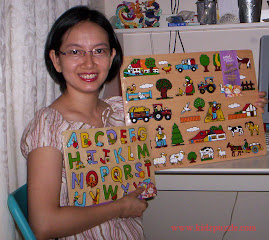Is it hard for children to learn maths for the first time? Yes, it is. I recalled how my kids used their fingers to learn counting 1 to 10 as taught by their kindergarten teachers. I used building blocks as counting objects to enhance her counting skill.
Connect-a-cube (interlocking cube) with an activity board is one example of learning aid to help children enhance their math skill. The cube has 5 holes and one peg for interlocking and children will find it FUN to interconnect the cubes. There are infinite possibilities to play and learn with these ONE HUNDRED cubes. Children can use them as an aid to sharpen their math skill (counting, addition or substraction) or to build any models of their imagination.
Connect-a-cube (interlocking cube) with an activity board is one example of learning aid to help children enhance their math skill. The cube has 5 holes and one peg for interlocking and children will find it FUN to interconnect the cubes. There are infinite possibilities to play and learn with these ONE HUNDRED cubes. Children can use them as an aid to sharpen their math skill (counting, addition or substraction) or to build any models of their imagination.

Counting 1 to 10 or 1 to 100.
.jpg)
Addition or Subtraction

Patterning or Graphing With The Activity Board


Build simple models. Children can be very creative when it comes to building a model. Sometimes young children doesn't follow a guide and just build an object of their imagination.








.JPG)












